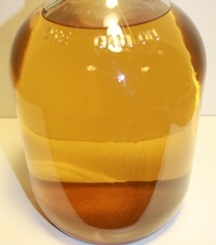The last thing a home brewer wants is to serve cloudy mead to their family and friends. Learn common causes of cloudy mead, tips to prevent hazy mead, and tricks to clear up cloudiness after fermentation.
 Hazy mead is almost always safe to drink, unless the cloudiness is caused by bacteria. With proper sanitation, it is very unlikely that bacteria is the cause. Fermentation can cause cloudiness, and is the first thing a mead brewer should look for when troubleshooting a hazy batch of mead. Proteins and suspended yeast can also contribute to cloudiness.
Hazy mead is almost always safe to drink, unless the cloudiness is caused by bacteria. With proper sanitation, it is very unlikely that bacteria is the cause. Fermentation can cause cloudiness, and is the first thing a mead brewer should look for when troubleshooting a hazy batch of mead. Proteins and suspended yeast can also contribute to cloudiness.
Irish moss and tannins are agents that can be added to the must as a measure to prevent mead from becoming cloudy. These fining agents promote flocculation and the settling of proteins and other compounds in the finished mead. Both of these adjuncts should be used sparingly as they can affect the flavor and character of your mead. After fermentation, if your mead is still cloudy there are steps you can take to clear it up. Bentonite is a fining agent with a negative charge that can be used after fermentation and works to rapidly clear mead in just a few days by flocculating the positively charged proteins. Suspended yeast can be removed by adding gelatin or isinglass. Yeast has a negative charge, so it is captured by the positively charged gelatin or isinglass. Again, most fining agents can affect the flavor of mead, so they should be used sparingly.
The best cure for cloudy mead is patience. Monitor the aging mead for sediment and rack as needed to keep your mead from aging on the lees. Most mead is best after a year of aging or more, and it is very rarely that I have come across a cloudy mead that has been aged adequately.